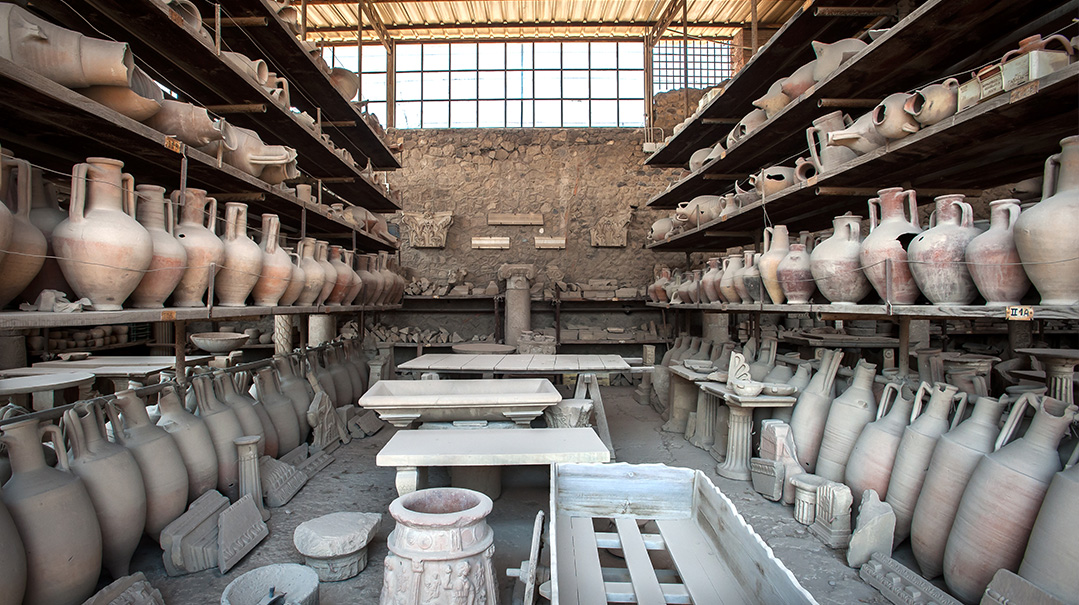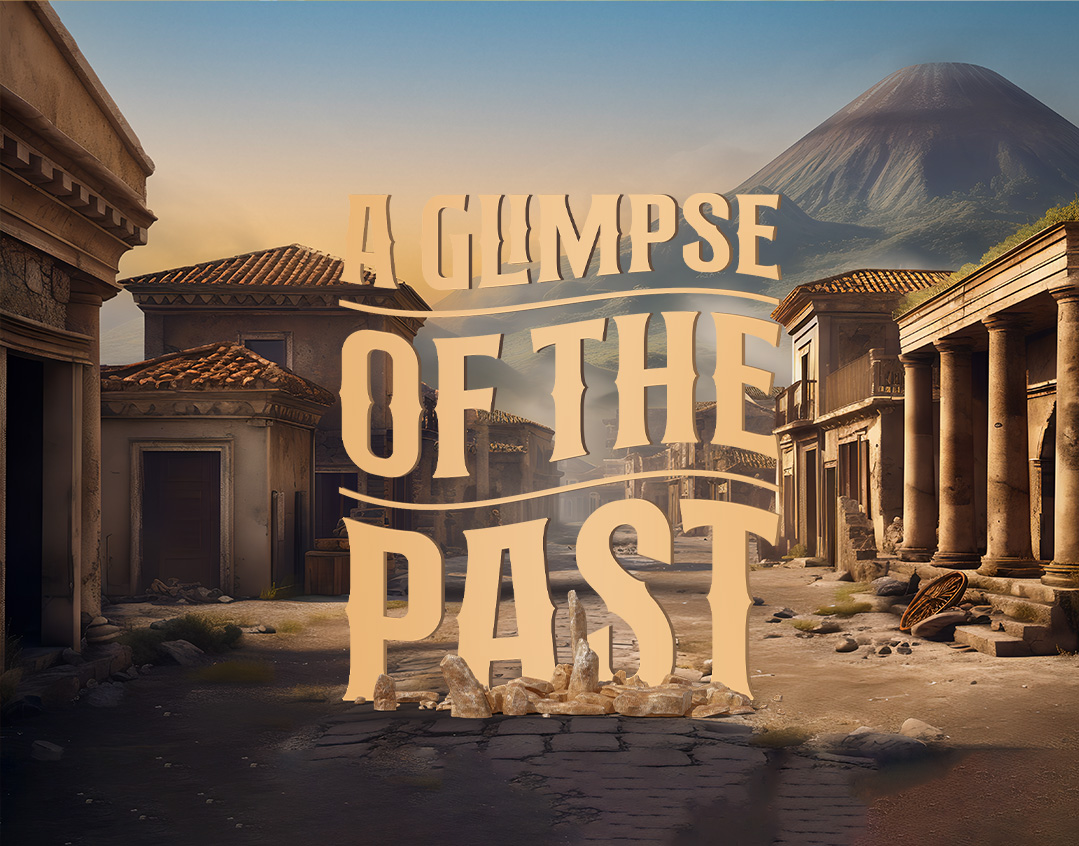Glimpse of the Past
| October 31, 2023Pompeii is one of the most fascinating time capsules and important archaeological sites in the world
Welcome to Pompeii, a lively city that thrived almost 2,000 years ago. It was abruptly frozen in time in 79 CE, just nine years after the destruction of the second Beis Hamikdash, when a nearby volcano, Mount Vesuvius, erupted in a fiery explosion. The town got buried under rocks and lava, and archaeologists only began to dig up its ruins 17 centuries later! Pompeii is one of the most fascinating time capsules and important archaeological sites in the world. Come with Treeo into a portal to the past!
The Journey Begins
Pompeii was a Roman coastal town nestled between the Mediterranean Sea and a large and active volcano, Mount Vesuvius. As we near the shore, you can see ancient colorful buildings and vibrant trees and flowers decorating the mountain. This coast used to swarm with pedestrians, merchants, tourists, and vacationing wealthy Roman aristocrats.
Stepping off our boat, you can see the grand arches of Porta Marina welcoming us to the city. Do you see two of them? The smaller one with steps was for pedestrians, and a larger one was for carts laden with goods to pass through.
The Forum
This rectangular area was the heart of Pompeii. The Forum was the place to go for food and supplies. Because of its rich agriculture, merchants from around the world would come in search of Pompeian wine, grains, and wool. The granary, for example, was where they sold fruits, vegetables, and wine, and the Eumachia building may have been used for the wool trade. Take a peek inside the granary — see all the Pompeian artifacts and relics, like terracotta pots and bottles?
Come, let’s look at these two-story shops. Shop owners often lived above their stores to be close to their wares. As we stroll through Pompeii, keep an eye out for its many thermopolia (restaurants) visited by peasants who couldn’t cook in their homes. Their menus boasted coarse bread with salty fish, baked cheese, lentils, and spicy wine.

Courthouse
Do you see that building over there surrounded by five pillars? No city would be complete without a government, and this, known as a Basilica, housed courts of law. It was once decorated with statues and marble. These 28 huge columns you see once supported an 11-meter-tall roof. This building was built between 130 and 120 BCE, making it the oldest Basilica in the Roman world.
Luxurious Living
Pompeii housed some of the wealthiest aristocrats in Rome.
While middle and lower-class houses were small and simple, the wealthy class’s villas often contained courtyard gardens and large lavish rooms. Most of the aristocratic Pompeians loved to flaunt their riches with engraved inscriptions at their entrance — like the house of Siricus, which had “Salve Lucru” (“welcome, money”) written in the front hallway!
The Jewish Community
There may have been Yidden in Pompeii! Jews consisted of 10 percent of the Roman population. They came after the destruction of the second Beis Hamikdash in 70 CE as slaves to be used in gladiator fights and for manual labor. There are some artifacts found to prove this. For example, archaeologists have found a bottle of wine labeled “Judaean,” as well as an inscription that refers to Sedom and Amorah, which historians think was inscribed a little while after the eruption occurred. Interestingly, the ancient historian Josephus recounts that a descendant of King Herod died during the eruption.
So, were there really Jews in Pompeii? The artifacts hint yes, but as of now, that part will just remain one of the mysteries of history.
Worldwide Ghost Towns
Pripyat, Ukraine
On April 26, 1986, Chernobyl’s nuclear plant exploded, releasing radioactive material into the air. This caused the quick evacuation of the nearby city, Pripyat, which is now an empty ghost town. The lingering radiation makes it still unsafe to live there.
Varosha, Cyprus
When Turkey invaded Cyprus in 1974, 15,000 people had to quickly leave Varosha, not realizing they’d never return. After the conflict, ongoing political issues have kept Varosha closed off with guards ever since. No chance now to pop back for any left-behind belongings.
Bodie, California
Founded during the gold rush, Bodie quickly grew to a town of 10,000 people. However, when people couldn’t find any more gold, the town lost its spark, and everyone left. Now, Bodie stands as a quiet ghost town with over 200 old buildings frozen in time.
(Originally featured in Mishpacha Treeo, Issue 984)
Oops! We could not locate your form.








